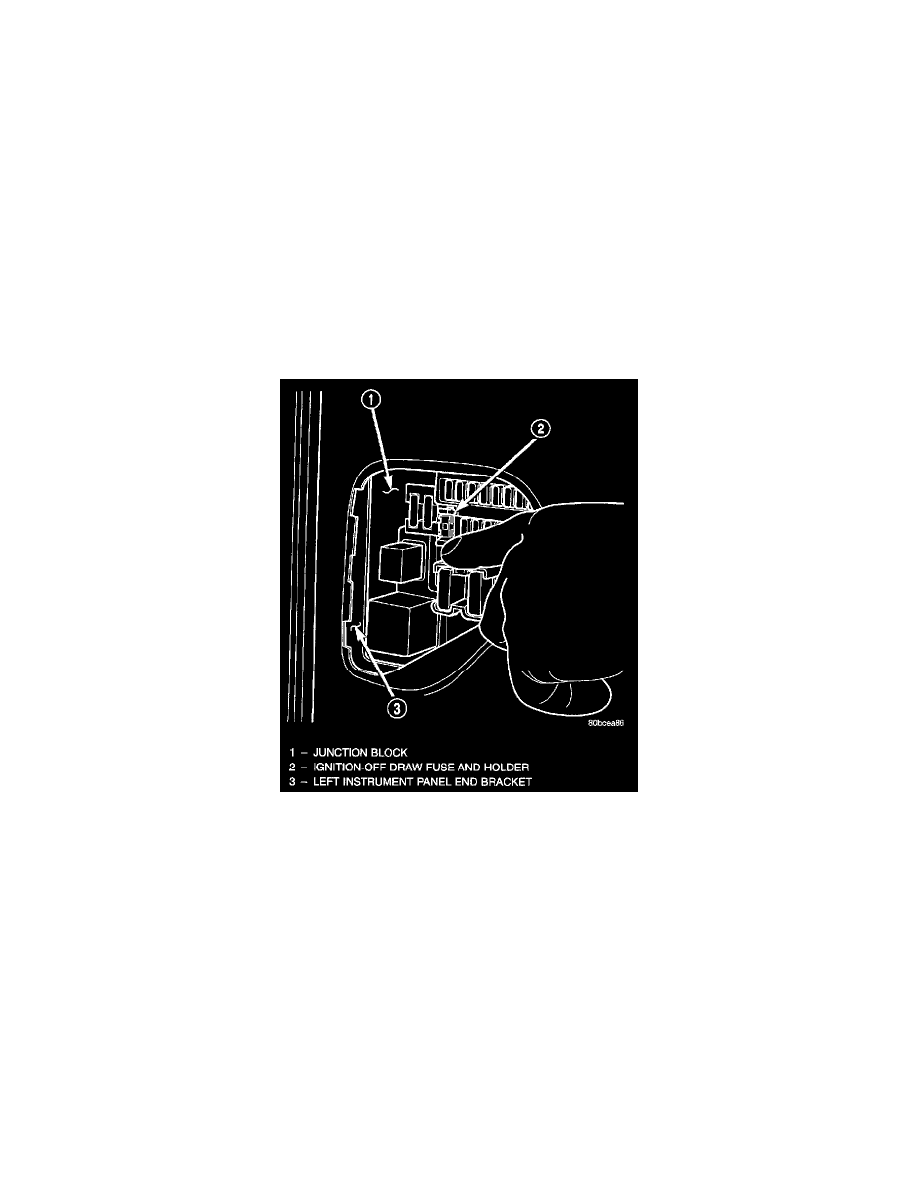RAM 3500 Truck 2WD V10-8.0L VIN W HDC (2000)

Ignition Off-Draw (IOD) Fuse: Description and Operation
IGNITION-OFF DRAW FUSE
All vehicles are equipped with an Ignition-Off Draw (IOD) fuse that is removed when the vehicle is shipped from the factory. This fuse feeds
various accessories that require battery current when the ignition switch is in the OFF position, including the clock. The IOD fuse is removed to
prevent battery discharge during vehicle storage.
When removing or installing the IOD fuse, it is important that the ignition switch be in the OFF position. Failure to place the ignition switch in the
OFF position can cause the radio display to become scrambled when the IOD fuse is removed and replaced. Removing and replacing the IOD fuse
again, with the ignition switch in the OFF position, will correct the scrambled display condition.
The IOD fuse should be checked if the radio or clock displays are inoperative. The IOD fuse is located in the junction block. Refer to the fuse
layout label on the back of the instrument panel fuse access panel for IOD fuse identification and location.
The radio receiver operates on fused battery current that is available only when the ignition switch is in the On or Accessory positions. The
electronic digital clock function of the radio operates on fused battery current supplied through the IOD fuse, regardless of the ignition switch
position.
For more information on the features, setting procedures, and control functions for each of the available factory-installed radio receivers, see the
owner's manual in the vehicle glove box.
Ignition-Off Draw Fuse
All vehicles are equipped with an Ignition-Off Draw (IOD) fuse that is disconnected within the Junction Block (JB) when the vehicle is shipped
from the factory. Dealer personnel are to reconnect the IOD fuse in the JB as part of the preparation procedures performed just prior to new
vehicle delivery.
The left end of the instrument panel cover has a snap-fit fuse access panel that can be removed to provide service access to the fuses in the JB. A
finger recess is molded into the access panel for easy removal. An adhesive-backed fuse layout map is secured to the instrument panel side of the
access panel to ensure proper fuse identification. The IOD fuse is a 10 ampere mini blade-type fuse. The fuse is secured within a black molded
plastic fuse holder and puller unit that serves both as a tool for disconnecting and reconnecting the fuse in its JB cavity, and as a fuse holder that
conveniently stores the fuse in the same JB cavity after it has been disconnected.
The term ignition-off draw identifies a normal condition where power is being drained from the battery with the ignition switch in the OFF
position. The IOD fuse feeds the memory and sleep mode functions for some of the electronic modules in the vehicle as well as various other
accessories that require battery current when the ignition switch is in the OFF position, including the clock. The only reason the IOD fuse is
disconnected is to reduce the normal IOD of the vehicle electrical system during new vehicle transportation and pre-delivery storage to reduce
battery depletion, while still allowing vehicle operation so that the vehicle can be loaded, unloaded and moved as needed by both vehicle
transportation company and dealer personnel.
The IOD fuse is disconnected from JB fuse cavity 12 when the vehicle is shipped from the assembly plant. Dealer personnel must reconnect the
